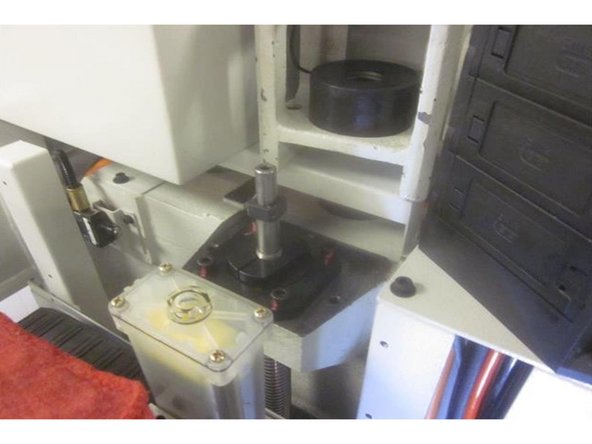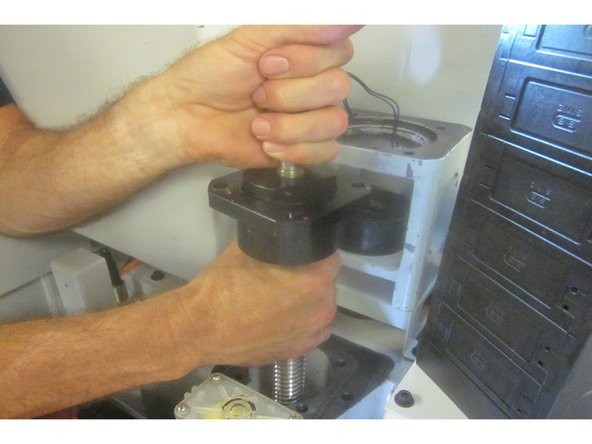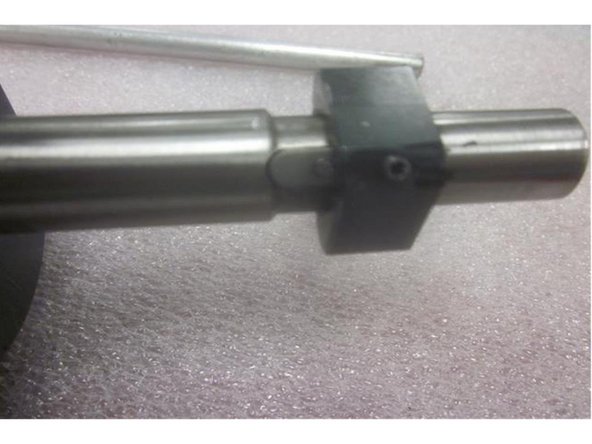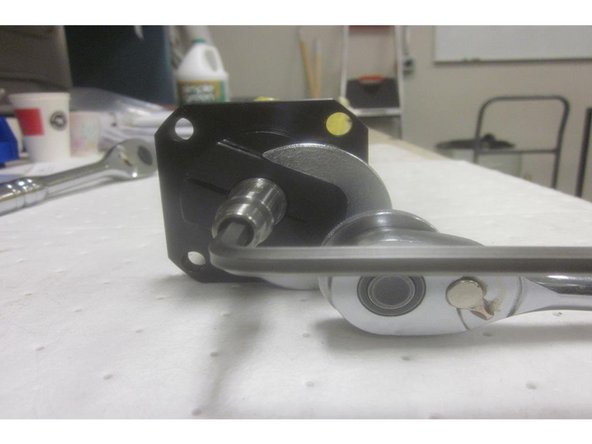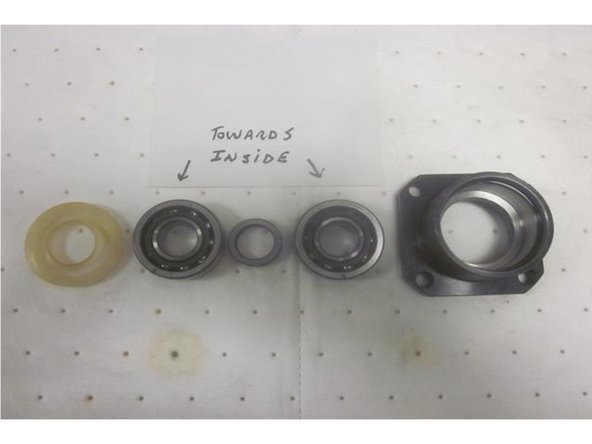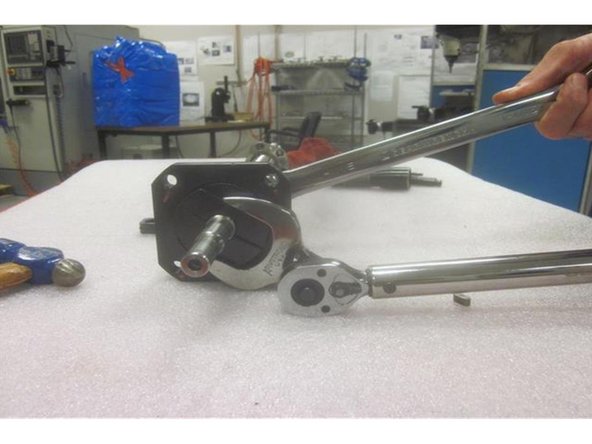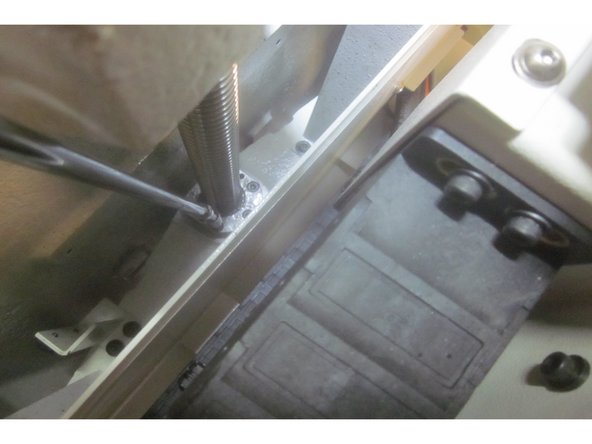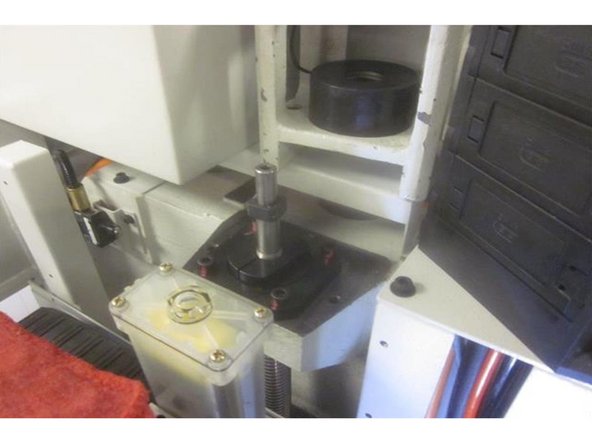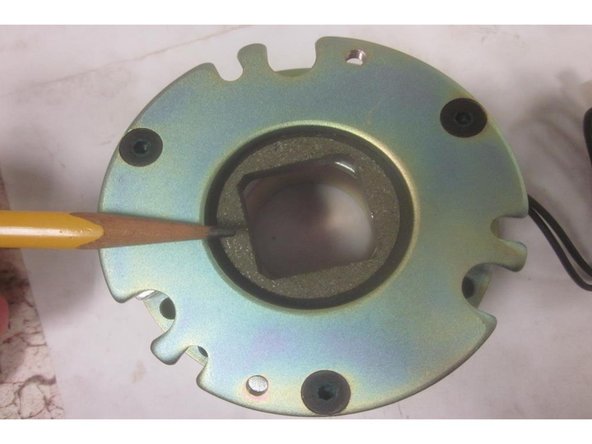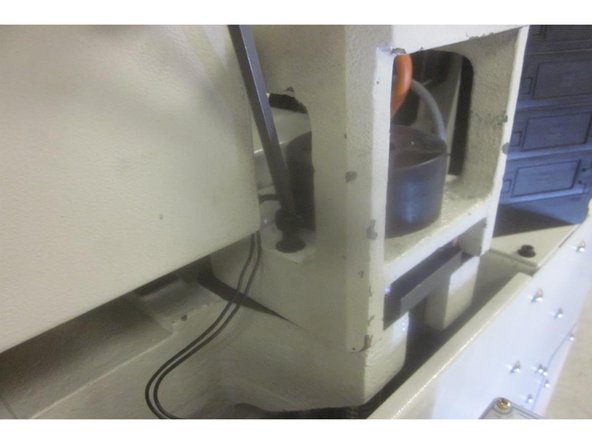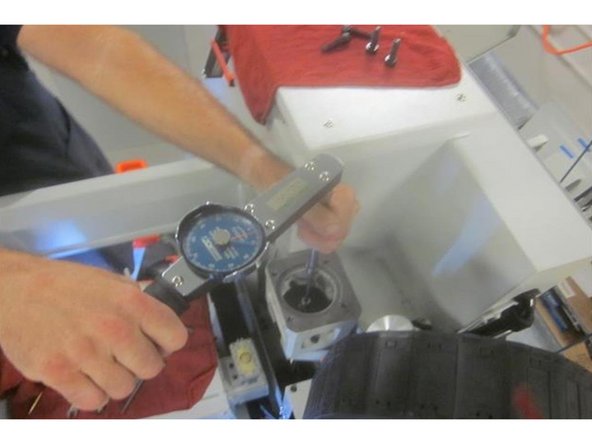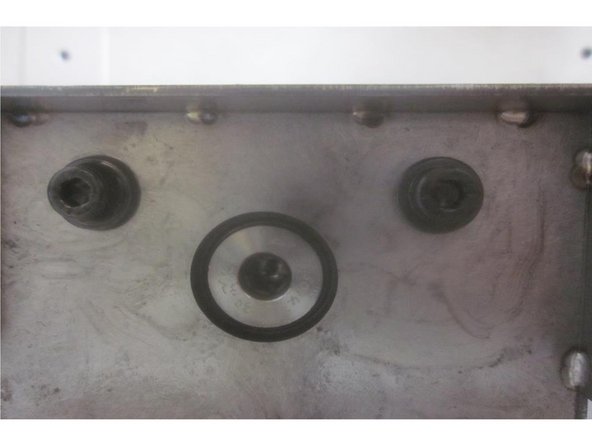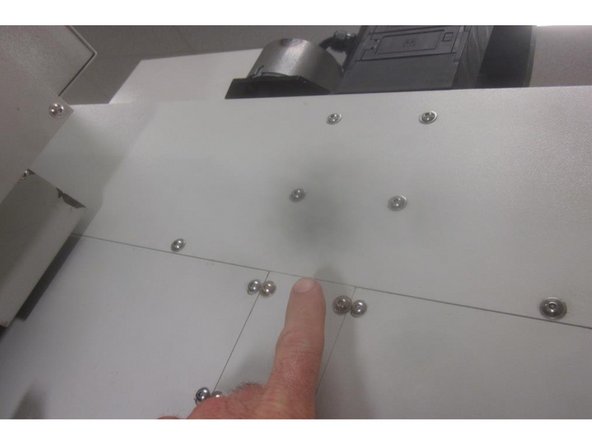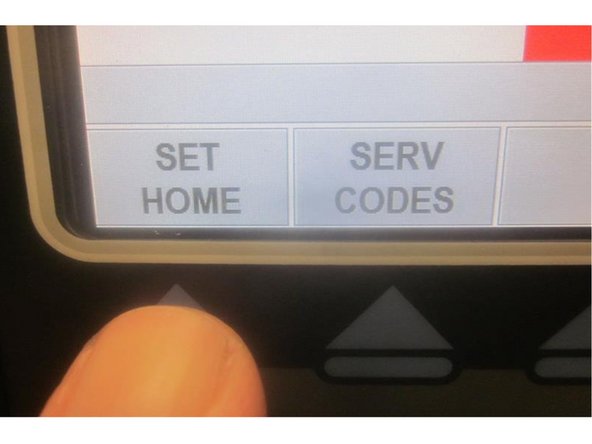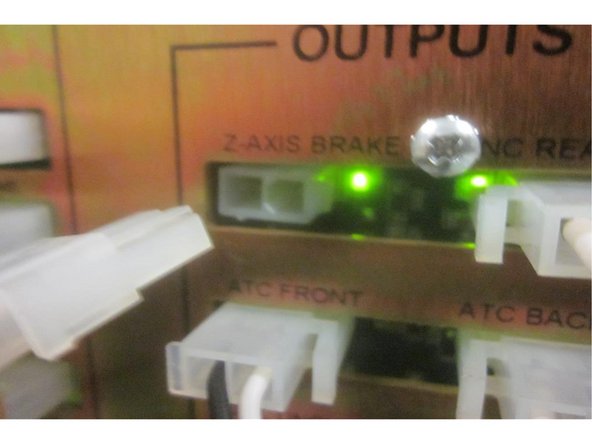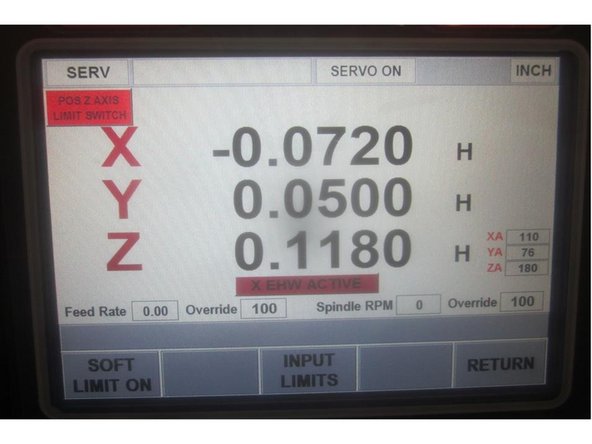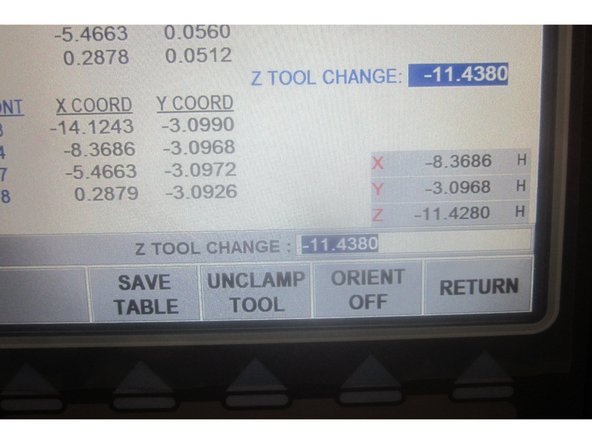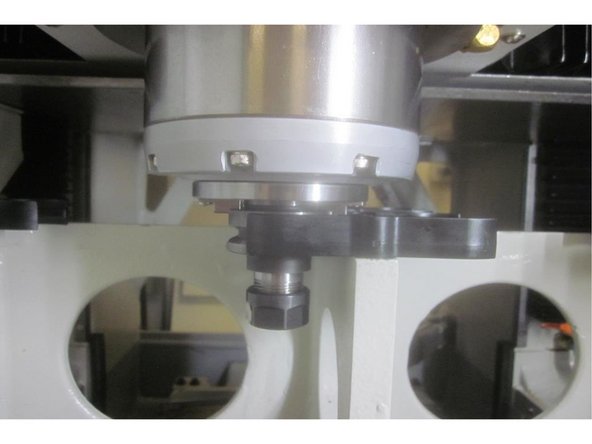Tools
- Metric hex keys
- 3/8 drive rachet and extensions and adapters
- 4, 5 and 6 mm depp ball drive hex sockets
- 3/8 drive "wobble" extension
- 1/4 drive ratchet and extensions
- 1/4 drive metric hex sockets
- Large 2 in cap. adjustable "crescent" wrench
- 1 1/2 (39mm) inch "crownfoot" wrench
- 0-100 ft./lbs. torque wrench
- 30-250 inch pound torque wrench
- 0-75 inch lbs. torque meter
- extendable magnet
- metric combination wrenches
- SWI 2 OP maintenance Manual
- Six foor ladder or step stool
- "short" 1 inch long x 1 inch long 3 mm hex key
- 4x4x10in wood block
- 4x4x13 in wood block
- 4x4x17 in. wood block
- 1/4 in. by 4 in. brass drift
- 1 1/4 inch (32mm) "crowsfoot" wrench
Parts
No parts specified.
-
-
Steps of this guide require you to work on the machine powered up. Use caution when doing so. Use the E-stop if you can. Remove any tooling fixtures from the table and tools from the spindle before starting work.
-
If possible, start the machine and "home" it. If you cannot home the machine, use service code 505 to jog the axis.
-
Raise the Z axis, disconnect the air and remove the ATC door. Remove the upper sheet metal panel located behind the spindle motor. It may be necessary to loosen other screws and components in this area to ease access to the ball screw.
-
Jog the Z axis up and down to access the ball screw cover screws. There are four (4) vertical that attach the cover at the top, six (6) horizontal that attach the cover frame to the column and two (2) vertical that attach at the bottom of the lower bearing housing.
-
Tip: Using a shortened 3mm hex key for the column screws eases the job. Gain access to the middle and upper column screws from the top.
-
Once loose ( the Z axis at the top ), slowly slide down and remove the cover as an assembly.
-
-
-
Disconnect the oil line that feeds the ball screw. Rotate the ball screw and loosen the three (3) set screws that secure the lower lock ring nut. Use a piece of brass or aluminum stock and tap on the set screws to loosen the inserts underneath. Remove the lock ring nut. Lower the Z axis so you have access to the top and bottom.
-
Support the bridge with lumber to prevent it from "dropping."
-
Shut down the 2 OP and shut off the power at the main disconnect switch.
-
-
-
Remove the cushion and spacer from the lower bearing housing.
-
Remove the Z axis motor. Loosen the two (2) lower screws of the motor coupler. Remove the four (4) screws that attach the motor to the brake housing. Lift off the motor with the coupler and set it aside.
-
Disconnect the wire to the Z axis brake. Remove three (3) bolts attaching the brake housing to the column. Remove the housing and set it aside.
-
Using a hex socket and long extension, remove the Z axis cushion attached to the ball nut. Remove the five (5) screws that attach the ball nut to the yoke / casting. Remove the four (4) screws attaching the upper bearing housing to the column.
-
Once free, lift the ball screw up and out from the machine.
-
-
-
We recommend changing bearings when replacing a ball screw. Clean all related parts for the job including any "machined" contact areas.
-
If you clean the old bearings, they must be spotless and the correct amount of new grease applied before installation. The lower bearing is "double sealed" and not easily lubed. Carefully wipe it clean with a rag or replace it.
-
With the ball screw removed from the machine, lay it on a flat surface. Loosen the two (2) small set screws holding the square (rotor hub) on the top end of the ball screw. Tap off the hub, remove the key and set aside. Use care working with this part. If damaged, it will require purchasing a complete brake assembly.
-
With the ball screw removed from the machine, lay it on a flat surface. Loosen the two (2) small set screws holding the square (rotor hub) on the top end of the ball screw. Tap off the hub, remove the key and set aside. Use care working with this part. If damaged, it will require purchasing a complete brake assembly.
-
-
-
Lube all fasteners prior to installation. Inspect the new ball screw for damage. Position the ball nut in approximately the same place as the old one. If replacing the upper angular contact bearings (recommended), make sure they are greased and orientated correctly with the spacer in between and the outer seal open side out.
-
Tip: The narrow inner race of the Angular Contact Bearing mounts towards the inside facing the spacer. The bearing should face each other.
-
Carefully fit the assembled upper bearing housing onto the end of the ball screw. Lube the threads and install the clamp nut. Torque it to 50 ft. lbs. and the lock screw to 60 in. lbs. Install the lower bearing. It is a precise fit, but may require a light "tap" to seat it against the shoulder on the ball screw.
-
Install the "key" and the "rotor hub." Use care with this part. Tighten the set screws securely.
-
Carefully slide the ball screw into position. Rotate the ball nut until it contacts the yoke / casting. Position it so the hole for the oil line is facing the LH side of the machine. Install the oil line. Turn the ball nut so the curved edge faces forward and the oil line at 4 o'clock.
-
Install the upper bearing housing screws and the ball nut screws ( just taking up most of the thread ). Torque the upper bearing housing screws to 18 ft. lbs. Install the lower bearing lock ring nut and tighten the set screws.
-
-
-
Install the brake housing. Rotate the ball screw to line up the hub rotor (square) on the ball screw with the brake. Tighten the housing screws securely. Install the brake cover and connect the wire for the Z axis brake. If the hub rotor won't align with the brake, see step below on how to align it.
-
If the square in the brake disc won't align with the rotor hub, power up the machine and press the servo button. This will release the disc allowing it to "float" and assist alignment. Leave all the screws out. Test fit the motor again then install and tighten all the screws securely.
-
Install the motor. Test fit it to the housing. It should slip in place easily and mount flush with the housing. Check for a "gap" on the coupler. It should be .100" or so between the plastic and aluminum.Tighten the four mounting screws and the lower coupling screws to 18 ft. lbs.
-
In service code 505 jog the Z axis as low as possible and still have access to the lower bearing housing. Break loose the housing screws allowing the housing to "float" then torque to 18 ft. lbs.
-
-
-
Caution: The next part of the guide requires working on the machine with the power on. The brake must have power on to check the rolling torque.
-
Warning: In this step use caution and use proper lengths of lumber or other suitable material to support the bridge top, middle and bottom.
-
Raise the Z axis near the top leaving access to the ball nut screws and motor coupler. Torque the screws to 84 in. lbs. in a star pattern. Support the bridge with lumber. Loosen the lower coupler screws. Remove the motor mounting screws. Remove the motor and set it aside.
-
Using a 6mm hex bit, a proper length extension and torque meter, check the rolling torque of the Z axis. Rotate the ball screw counter clockwise "up" to check. Install the motor and tighten the mounting and coupler screws.
-
Repeat this process at the middle and bottom of the axis travel. After checking all three locations install the motor and tighten the coupler and mounting screws securely. Rolling torque spec is 25 in. lbs. + or - 5 in. lbs.
-
Double check that all fasteners are properly torqued and tight.
-
Raise the bridge and remove any supports. Press the E-stop button.
-
-
-
Use caution if it's necessary to work on the machine with the power on. Use the E-stop if you can.
-
Install the lower spacer and cushion on the bearing housing. Install the Z axis ball screw cover. Lube all fasteners. Start the bottom screws in the lower bearing housing then start the rest. Starting at the top working down, tighten all the screws securely. Install the ATC door. Connect the air.
-
Jog the Z axis up and down and check for any binding of the ball screw cover.
-
Install the upper sheet metal panel above the rear of the spindle. Install the X axis upper and lower side covers to the bridge. Check any "other " screws or components that were loosened for access to the ball screw.
-
-
-
Use caution if working with the power on. Use the E-stop if you can.
-
If powered up, home the machine.
-
Go to service code 505 and slowly raise Z until the limit switch lights. Note the index angle number. If the number is within spec ( 180 + or - 45 (135-225) proceed to step 10. If the number is out of spec adjust the index angle.
-
To adjust the index angle, leave the power on and lower the Z axis to gain access to the motor coupler screws. Stop at the number you noted earlier. Disconnect the Z brake wire from the computer module. Note: This will hold the bridge from dropping.
-
Loosen the lower coupling screws from the motor. Use the hand wheel to adjust the index angle to 180 deg. Tighten the lower coupling screws securely. Re-connect the brake wire on the computer module. Raise the Z axis and check the index angle. Home the machine again and re-check the index angle.
-
-
-
Go to service code 520. Press the " ATC front, then" "Go keys."The ATC will come forward. Press the "Input Table " key.
-
Using the hand wheel, highlight the "Z Tool Change" number. Place a tool holder in any location. Jog X and Y to match the coordinating tool location numbers. Press the "Orient On" key. Press the "Unclamp Tool" key. Slowly lower the Z axis engaging the drive dogs until the air from the spindle just stops. Raise it until it just starts.
-
Note the number displayed in "Z" in the DRO in the lower right corner of the screen. Add (-) .010" to this number, enter it in the display and press ABSet. Press the "Save Table" key. Raise the Z axis to clear the ATC. Example: Z tool height displays-11.5500. After adding to number should read -11.5600
-
Press"Return," "ATC Back," "Mode," then the "RSTR" key. Go to service code 203 and home the machine. This will also set the soft limits.
-
Check the Z height by loading and unloading several tool locations in the "Tool Loading" process. Look for deflection of the tool grippers during the process. Adjust the Z tool height as necessary to obtain smooth operation.
-
Go to service code 300. Cycle the lube pump several times to ensure the ball screw has oil circulating through it.
-






